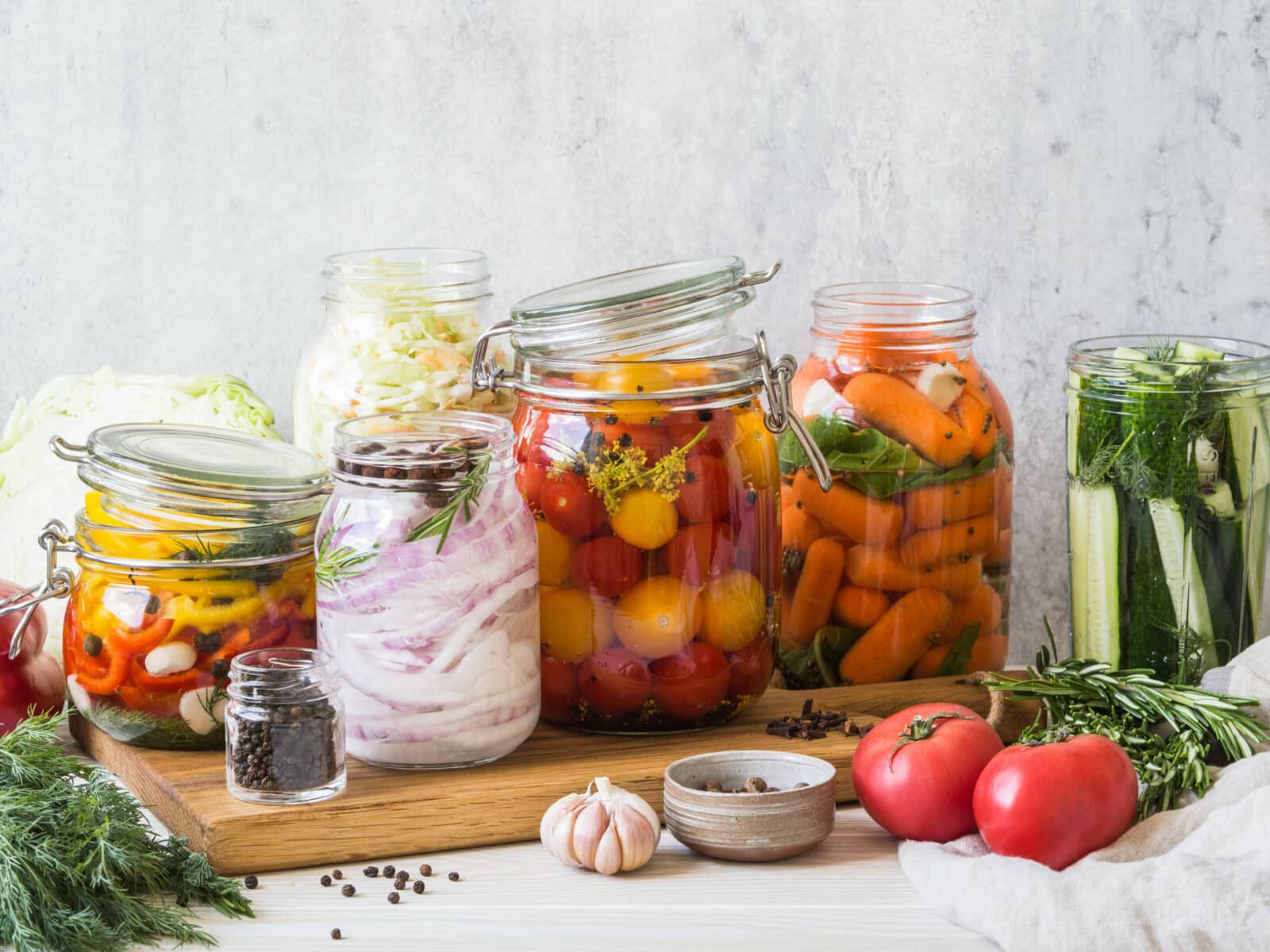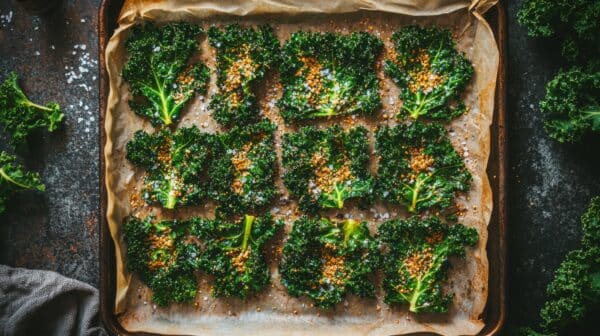Fermenting vegetables is easy to do at home and can be done relatively simply. The preparation process itself is easy, and usually, you only have to wait 2-3 days before you can enjoy the fruits of your labor.
Fermented vegetables are rich in nutrients and have other healthy probiotic effects. They can be used as a tasty side dish or eaten as a snack.
You may be asking “What is fermented food?” Fermentation is essentially the conversion of carbohydrates to alcohol or organic acids using microorganisms, like yeasts or bacteria, under anaerobic conditions.
How to ferment vegetables
The easiest way to make fermented vegetables is with a salt brine, which is essentially just salt and water. By fermenting the vegetables in salt, you can easily prevent mold or any build-ups of bad bacteria. To ferment vegetables all you need are 5 things:
- Vegetables,
- Salt,
- Water, non-chlorinated if possible
- Optional: bay leaf, peppercorns
- A jar,
- A little time.
Typical salt brines consist of a salt ration anywhere from 2% -5%. Below 2%, and the vegetables have the chance of rotting before becoming preserved, and above 5%, you risk preventing fermentation altogether as the beneficial microorganisms may not be able to survive. We recommend using a simple 2% brine, which can be used for any kind of vegetable.
Step 1: Make your salt brine
To calculate the amount of water to salt for the brine simply take the volume of water in ml (= weight in grams) multiplied by the concentration of the desired brine (e.g. 2% = .02) equals the amount of salt in grams.
For example, for 1 liter (1000 ml) of water, you would use 20 g of salt.
Quick Brine Reference Table
| 500 ml | 750 ml | 1000 ml | 2000 ml | 3000 ml | |
| 2% | 10 g | 15 g | 20 g | 40 g | 60 g |
| 3.5% | 18 g | 26 g | 25 g | 70 g | 105 g |
| 5% | 25 g | 38 g | 50 g | 100 g | 150 g |
Mix the salt and water until all the salt is dissolved.
Step 2: Wash and cut your vegetables
Choose whatever kind of vegetables you would like to ferment, these could be cucumbers, carrots, broccoli, peppers, cauliflower, etc. Wash the vegetables thoroughly to remove any dirt or other substances that might be on them. Cut them into the desired shape or size you prefer.
Step 3: Sterilize your fermenting container
It is important in any type of fermentation to not introduce any unwanted bacteria or mold into the ferment before it begins. Therefore, you should rinse your jars or other containers with boiling water before using them.
Step 4: Fill your jar
Fill your jar or container with the vegetables you have chosen and pour enough brine in to cover the vegetables by roughly 1 centimeter. Vegetables not covered by the brine will typically not ferment and run the risk of spoiling.
Step 5: Let your vegetables ferment
Close the jar and leave your vegetables to ferment for 2-3 days. You should start to see bubbles when the fermentation process is underway.
Temperature and direct sunlight both play key roles in fermentation. The ideal temperature for fermentation is roughly 21° C. Try to keep your fermenting vegetables out of direct sunlight. If the temperature is lower, it will take longer to ferment and if higher it may take less time to ferment.
Feel free to open the jar and taste the vegetables to see if they are fermented to your liking after the second day. If they need more time, simply let them ferment longer. Once they reach the desired taste move the fermented vegetables to the fridge to stop the fermentation process and keep them preserved for longer.
Learn more about fermentation!
What are the best vegetables to ferment?
The great thing about fermenting vegetables is that you can ferment any type of vegetable and any mix of vegetables. So, you can let your imagination fly and experiment with all kinds of vegetables.
What is a basic vegetable for fermentation?
The most common vegetables to ferment are cucumbers, carrots, cabbage, cauliflower, and peppers.
What vegetables can you ferment together?
You can easily mix and match vegetables to ferment. Try mixing carrots and cauliflower for example and you can also add spices like garlic, onions, mustard seeds, or chilis to give your fermented vegetables even more flavor!
How to make fermented vegetables for gut health?
That’s the beauty of all fermented vegetables! They are all good for gut health as they all have probiotic properties from the fermentation process.
What vegetables should not be fermented?
There is no vegetable that you can’t ferment! All vegetables contain the necessary good bacteria and yeasts to ferment. Some people may not prefer fermenting leafy green vegetables such as lettuce or kale, however, they can be fermented, it is just a matter of taste!
Now you should know everything you need to know to start making fermented vegetables. So, give it a try! It is easy and fermented vegetables can be added to any meal as a healthy side dish that also includes beneficial probiotic properties.




